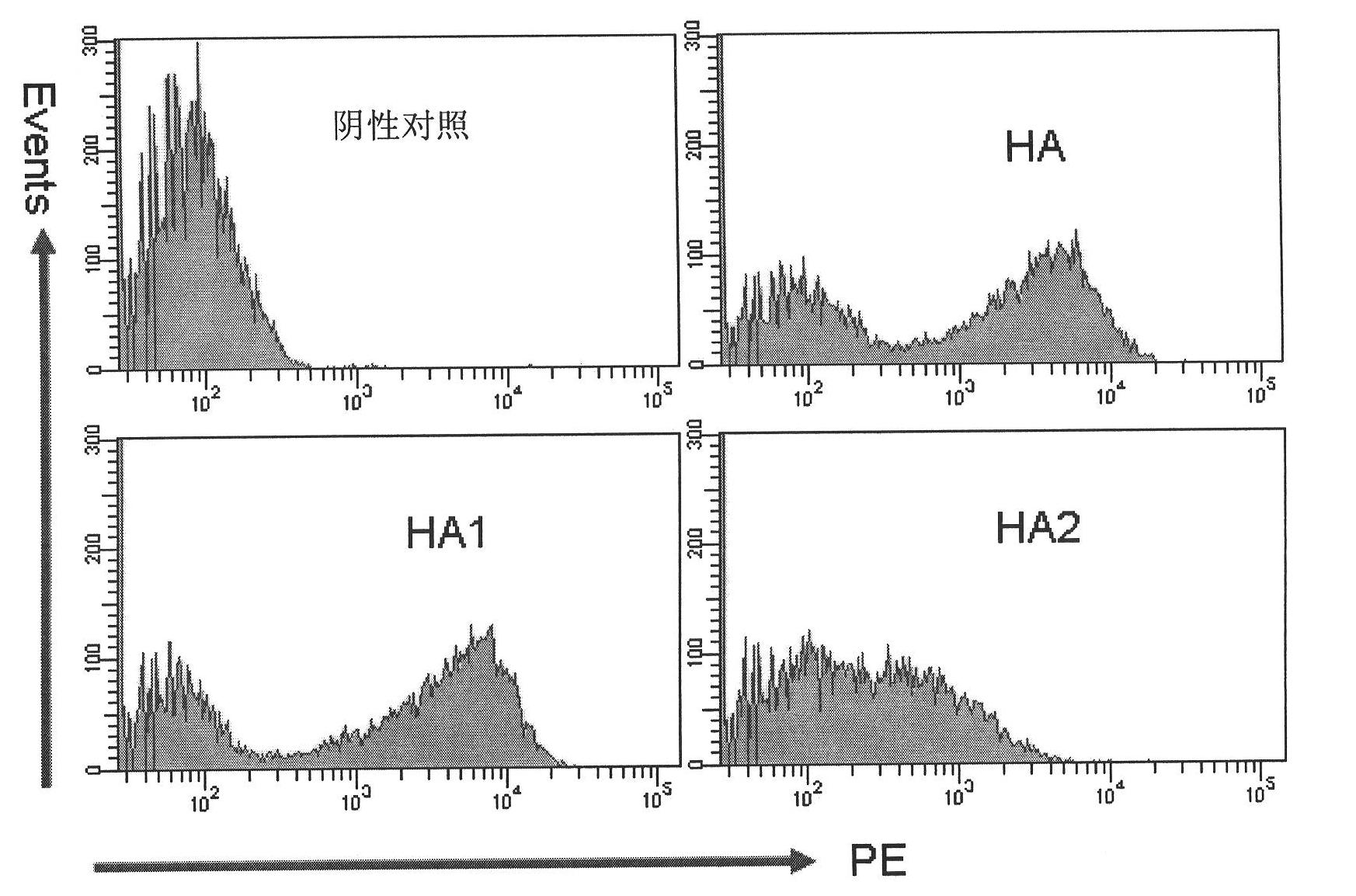Method for analyzing epitope of protein
An antigenic epitope and protein technology, applied in the direction of analyzing materials, instruments, and using carriers to introduce foreign genetic material, etc., can solve the problems that bacteriophages are easy to be airborne, cannot be well simulated, difficult to express and display, etc., to improve accuracy Performance and screening throughput, good simulation space conformation, and not easy to cross-infection
- Summary
- Abstract
- Description
- Claims
- Application Information
AI Technical Summary
Problems solved by technology
Method used
Image
Examples
Embodiment 1
[0048] Example 1. Evaluation of the ability of pCTCON2 plasmid and yeast to display foreign protein
[0049] 1. Construction of recombinant plasmids
[0050] The H5N1-HA protein coding gene (the HA protein of H5N1 avian influenza virus, as shown in Sequence 1 of the Sequence Listing, and its coding gene as shown in Sequence 2 of the Sequence Listing) was inserted between the Nhe I and BamH I sites of the pCTCON2 plasmid. During this time, the recombinant plasmid A was obtained.
[0051] The H5N1-HA1 protein coding gene (as shown in the sequence 2 of the sequence listing from the 1-987th nucleotide at the 5' end, and the sequence 1 of the coding sequence listing from the amino acid residue shown at the 1st to the 329th position at the N-terminal. ) was inserted between the Nhe I and BamH I sites of the pCTCON2 plasmid to obtain a recombinant plasmid B.
[0052] The H5N1-HA2 protein encoding gene (as shown in the sequence 2 of the sequence listing from the 988th to 1545th nucl...
Embodiment 2
[0060] Example 2. Construction of pCTCON2-T plasmid (recombinant yeast display vector)
[0061] In order to facilitate library construction, the pCTCON2 plasmid needs to be transformed into a T vector, and the steps are as follows:
[0062] 1. Synthesize the DNA (double-stranded) shown in Sequence 3 of the Sequence Listing.
[0063] 5’-AGTCGCTAGC GGATCCGGGT-3' (sequence 3).
[0064] The Nhe I recognition sequence is underlined on the left, the BamH I recognition sequence is underlined on the right, and the two Xcm I recognition sequences are marked in bold.
[0065] 2. The DNA synthesized in step 1 was double digested with restriction enzymes Nhe I and BamH I, and the digested product was recovered.
[0066] 3. The pCTCON2 plasmid was digested with restriction endonucleases Nhe I and BamH I, and the vector backbone was recovered.
[0067] 4. Connect the enzyme digestion product of step 2 and the vector backbone of step 3 to obtain pCTCON2-T plasmid (the backbone vector is...
Embodiment 3
[0068] Example 3. Application of the method of the present invention to analyze the antigenic epitope of H5N1-HA protein
[0069] Apply the method of the present invention to screen the antigenic epitope of the H5N1-HA protein, the process is as follows image 3 shown. Firstly, the gene encoding H5N1-HA protein was randomly cut and recombined to obtain random fragments; the random fragments were inserted into the pCTCON2-T plasmid through T-A ligation; then Saccharomyces cerevisiae was transformed to induce expression of various fusion polypeptides (polypeptides encoded by random fragments and Aga2 The C-terminal fusion of the protein) is displayed on the surface of Saccharomyces cerevisiae (yeast display library); FACS sorting is performed by the antibody (polyclonal antibody or monoclonal antibody) of the H5N1-HA protein to obtain recombinant yeast bound to the antibody; The recombinant yeast plasmid was sequenced, and the antigen-antibody interaction was studied according ...
PUM
 Login to View More
Login to View More Abstract
Description
Claims
Application Information
 Login to View More
Login to View More - R&D
- Intellectual Property
- Life Sciences
- Materials
- Tech Scout
- Unparalleled Data Quality
- Higher Quality Content
- 60% Fewer Hallucinations
Browse by: Latest US Patents, China's latest patents, Technical Efficacy Thesaurus, Application Domain, Technology Topic, Popular Technical Reports.
© 2025 PatSnap. All rights reserved.Legal|Privacy policy|Modern Slavery Act Transparency Statement|Sitemap|About US| Contact US: help@patsnap.com



